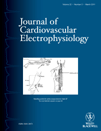Feasibility of Electroporation for the Creation of Pulmonary Vein Ostial Lesions
Both authors Fred H. Wittkampf and Vincent J. van Driel contributed equally to this work.
A patent relevant to this study has been applied for by University Medical Center, Utrecht, Netherlands. Fred H. Wittkampf is a consultant for St. Jude Medical, Inc, AF division. Other authors: No disclosures.
Abstract
Feasibility of Electroporation. Introduction: There is an obvious need for a better energy source for pulmonary vein (PV) antrum isolation.
Objective: We investigated the feasibility and safety of electroporation for the creation of PV ostial lesions.
Methods: After transseptal puncture, a custom 7F decapolar 20 mm circular ablation catheter was placed in the PV ostia of 10 pigs. Ablation was performed with a nonarcing, 200 J application delivered between the catheter and an indifferent patch electrode on the lower back. A single pulse was applied for each catheter position, with a maximum of 4 per ostium. Local PV electrogram amplitude and stimulation threshold were measured at multiple locations in both ostia before and directly after ablation, and after 3 weeks survival, using a regular 4 mm mapping catheter. All PV ostia were sectioned, stained, and histologically investigated.
Results: The 3-week survival period was uneventful. PV ostial electrogram amplitude decreased and stimulation threshold increased significantly in most ostia. PV angiograms did not show any stenosis during this short follow-up. Histologically, up to 3.5-mm-deep lesions were found.
Conclusion: Data suggest that electroporation can safely be used to create lesions in a sensitive environment like PV ostia. (J Cardiovasc Electrophysiol, Vol. 22, pp. 302-309, March 2011)




